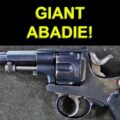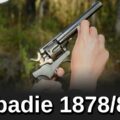The Federapparat (FAT) or ‘spring device’ was developed to increase the probability of hitting a ship or escort in a convoy. The idea was to make the torpedo zig-zag across the convoy if it missed the initial target. The FAT run structure had 2 parts – an initial straight run to close the intended target, and to ensure the torpedo was clear of the firing submarine before it reversed course, and a series of course reversals where the torpedo turned through 180 degrees after running a defined leg of 1,200 m or 1,900m.
The FAT was introduced in 1943, initially for the wet heater air-driven G7a torpedo, but restricted to nighttime attacks in case the allies observed the looping paths of the air trails. Use in the Mediterranean and North sea were also forbidden due to the clearer water.
The electric G7e torpedo was a candidate of the FAT, but was restricted initially by its limited range – 5,000m. With the increasing convoy escort convoy capability, it was becoming dangerous to approach too close to a convoy. However, the German engineers managed to upgrade the batteries by developing a 17-plate cell (previous their lead-acid cells had 13 plates) which delivered a 50% range increase for the torpedo at 30 knots. This torpedo was designated the TIIIa, and is the subject of this animation.
The TIIIa used compressed air to drive its control surfaces: the Gyro, Gyro servo to operate the rudders and depth servo to maintain the desired depth. The FAT was also powered by comprised air. Because of the increased range capability (and run time), two additional compressed air flasks were fitted at the front of the battery compartment. The control air did not leave a significant trail, however, so the torpedo could be used in all theatres and time of day.
The FAT had 4 control disks, one for each of the run paths – long loop, initial turn to the right, long loop turn to the left, short loop right and short loop left. The run path and initial straight run distance were set using a single input shaft. 4 turns of the shaft would firstly select the initial run distance, and then physically raise the control disk set to the next run path type. Thus 16 turns of the shaft would cycle through all 4 run types and return to the default setting – 15,000m initial run for Long loop path, turn first to the right.
When the setting cam set was being raised (or lowered) the indicator shows the marking ‘flasch’ (wrong), since if the torpedo was fired with ‘falsch’ showing, the initial run would be zero, and the tun to left or right ambiguous, thus endangering the firing submarine. The torpedo tube-mounted setting device physically prevents a setting when ‘falsch’ is showing.
The control disks have a set of ridges, valleys and mid-levels. A control piston rides on these cams. In the mid-level, the gyro controls the rudder servo in the normal manner. However, when a ridge or valley is encountered, the air driven FAT piston forces the rudder servo to the left or right, and so turns the torpedo through 180 degrees. The Gyro outer gimble now has two control cams, one to steer the selected fire control gyro angle, and the other (lower) to steer the reciprocal course.
The FAT was relatively short lived. With a FAT, the convoy would pass over the looped run path. However, the next variant, LUT, was arranged to advance the loop pattern along a convoy’s course and speed. This is too complex for me, and I shall not attempt to animate it.
See also my YouTube animation of the G7e torpedo:
https://www.youtube.com/watch?v=CAO2BYZdfE4
The animation was made using Cinema 4D and Quicktime Player v7
Music tracks are:
Revelation and October Sky, Copyright AKM Music, www.akmmusic.co.uk
References:
‘Die Torpedos der deutschen U-Boote’ Eberhard Rösseler, 2005, ISBN 3-8132-08427
RM6-3149 Federapparat für den Torpedo G7e, 1942

Hi, I’m Rob, otherwise known as VBBSMYT.
I create the animations on my iMac using Cinema 4D, which I find very intuitive, and allows me to add smoke and flames, and then send the model to my trusty Render farm.
I make my models as accurate as possible through reference books and particularly good drawings. You may have seen my animations of early torpedoes and machine guns on YouTube. I enjoy finding out how things work and it has been fascinating to track the development from the late Victorian period up to World War 1.
![NATO PDW Trials: The Forbidden Saga of “MP7 vs P90” [ Collab with Oxide ]](https://surplused.com/wp-content/uploads/2021/12/19535-nato-pdw-trials-the-forbidden-saga-of-mp7-vs-p90-collab-with-oxide-120x120.jpg)




